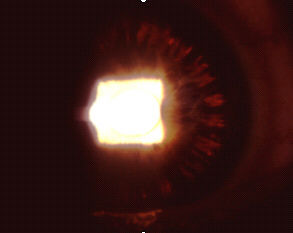
Refer to question 1 |
1. The above picture is taken from a patient in his mid-20s.
The following are true:
a. the iris is likely to be convex
b. there is posterior insertion of the iris root
c. lattice degeneration is common
d. the sex distribution of this condition is the same
e. the risk of glaucoma development is commoner in
females than males
a.F b.T c.T d.T
e.F
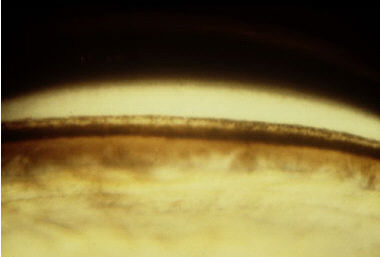
Refer to question 2 |
2. The above is an appearance obtained through gonioscopy:
a. the angle is at risk of closure
b. there may be peripupillary transillumination
c. the patient may be pseudophakic
d. the pressure is likely to be above 21mmHg
e. the patient may be a poorly controlled diabetic
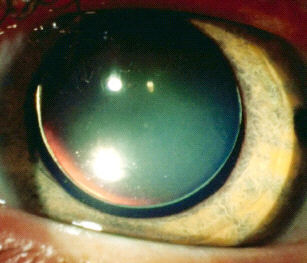
Refer to question 3 |
3. The following are true with regard to the picture above:
a. the patient may be of tall stature and myopic
b. deafness may be present
c. there may be arachnodactyly
d. there is a risk of lens dislocation
e. if the pressure is raised, the treatment of choice is
intensive pilocarpine
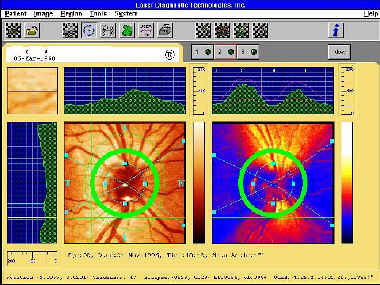
Question 4 |
4. Regarding the above picture:
a. it is obtained with OCT (optical coherence
topography)
b. it is obtained with the use of laser
c. it is used to analyse nerve fibre layer thickness
d. the blue area has more nerve fibres than the red area
e. it can be used to diagnose glaucoma on its own
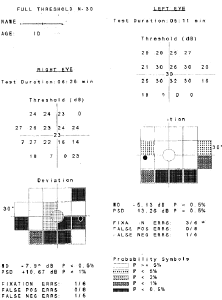
Refer to question 5 |
5. With regard to the above visual field results:
a. it is obtained with octopus perimeter
b. the test uses yellow light
c. the M cells are tested
d. it tests neurones that are sensitive to low-contrast
stimulus
e. it can theoretically detect glaucoma at an early stage